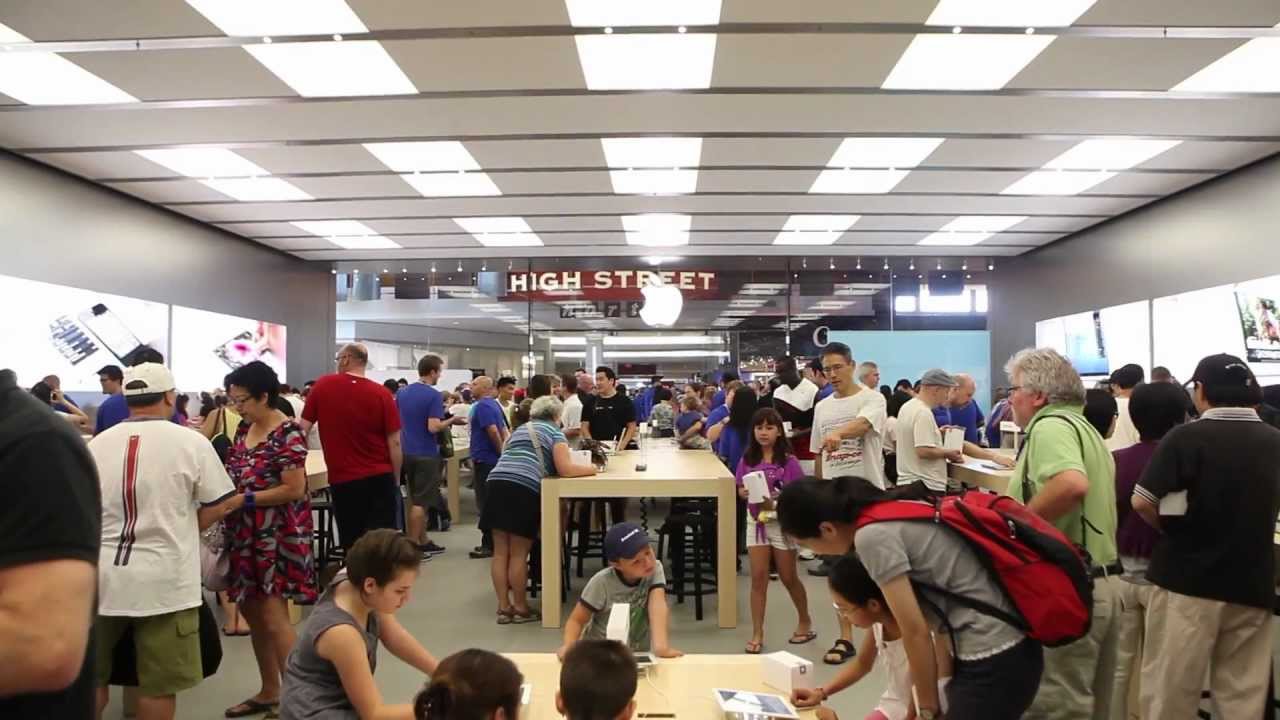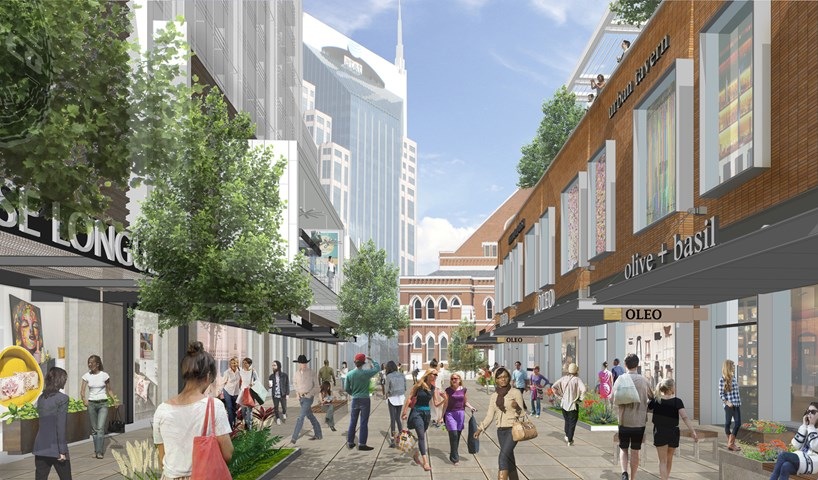Amazon CEO Jeff Bezos once said “All businesses need to be young forever. If your customer base ages with you, you’re Woolworth’s.” That sentiment is particularly true when it comes to retail brick-and-mortars, which are experiencing slumping profits as high-tech online retailers increasingly appeal to younger customers.
As we’ve mentioned in our previous “The New Student” blog posts, today’s college students are financially better off than earlier generations. In fact, it’s reported that the average university student has around $15,000 in annual spending power. To succeed, retailers must capture some of that tremendous market, which means optimizing location, technology and store design to attract the attention – and dollars – of savvy Millennial shoppers. Here are some key factors in creating those spaces.
Ease of access
Because Millennials value convenience – and because an increasing number are forgoing cars – shopping destinations should be close to campus or easily accessed by alternative transportation and public transit. This ties into the importance of walkable neighborhoods. Many universities are designed for walking, but you still need a car once you’re past the edge of campus. When college students go grocery shopping, clothes shopping – or any type of shopping, for that matter – it should be quick, simple and highly accessible; not a hassle. Mixed-use spaces are helpful because shoppers can grab pantry staples, a new shirt and dinner, for instance, all in one convenient spot. A RetailingToday article emphasized the significance of creating a “living community” around millennials, where retailers are part of a larger mixed-use ecosystem that provides a variety of spaces for the “live, work, play” of everyday life.
 Apple retail stores are known for creating engaging, interactive and relaxed experiences for customers, which is appealing to millennials - and other generations.
Apple retail stores are known for creating engaging, interactive and relaxed experiences for customers, which is appealing to millennials - and other generations.
Technology integration
Millennials may have a lot of spending power, but they don’t have a lot of patience for wasted time. That’s a major incentive for the conveniently located stores I discussed above, and it’s an important reason for retailers to integrate technology into the shopping experience whenever possible. These days, it’s difficult for brick-and-mortar stores to compete with the lightning-fast purchases offered by websites like Amazon, where free and fast shipping is the norm. Millennials are also known for researching the products they buy, placing a great deal of value on other shoppers’ reviews. The Urban Land Institute reported in 2013 that 45% of Millennials spend at least one hour browsing online stores and reading product reviews every day. Brick-and-mortars simply don’t offer that level of speed or connectivity, so they have to find new, creative ways to draw foot traffic like “in-store pick-up,” special discounts or demonstrations. Think Apple, where brick-and-mortar stores are staffed by knowledgeable, approachable employees, the latest gadgets are on-hand for testing, and cool classes are offered for free.
Experiential excitement and diversity
Mixed-use developments and retail centers should also aim to be well-rounded when it comes to the types of tenants they contain and the quality of experiences they offer. Millennials enjoy a lot of different retail styles, from sleek and high-tech to vintage; it’s most important to create an authentic, intimate sense of place and avoid feeling generic. Branded environments and fresh signage can help achieve this goal, elevating Millennials’ in-store experience and creating that essential brand connection and brand loyalty. Millennial-friendly amenities life free WiFi, self check-out kiosks and even flattering lighting make the retail interior a more inviting place.
There’s an art and a strategy behind creating Millennial-friendly retail spaces. Companies should recognize the importance of integrating with the surrounding community, with public transportation and with technology to create a meaningful shopping experience. Millennials are discriminating with where and how they spend money, but once they’re committed to a retailer, they tend to stick around.
This is Part III of GS&P's The New Student blog series, which discusses higher-ed design trends and best practices for supporting the millennial generation. Stay tuned next month for the fourth installment, “Where Millennials Dine,” a look at the highly convenient and stylized campus cafeterias and dining spaces that appeal to Millennials. Don’t miss previous installments, “Where Millennials Live” and “Where Millennials Learn.”
About the Author: Brandon Bell is a senior designer in the firm’s Nashville Design Studio. His more than fifteen years of architectural experience supports the continued expansion of mixed-use and multi-family design services offered by GS&P’s Corporate market. Bell has helped lead the design, documentation and construction of more than 10,000 housing units in locations covering 14 states from Colorado to Rhode Island.
More from Author
Gresham Smith | Oct 16, 2024
How AI can augment the design visualization process
Blog author Tim Beecken, AIA, uses the design of an airport as a case-study for AI’s potential in design visualizations.
Gresham Smith | Aug 17, 2023
How to design for adaptive reuse: Don’t reinvent the wheel
Gresham Smith demonstrates the opportunities of adaptive reuse, specifically reusing empty big-box retail and malls, many of which sit unused or underutilized across the country.
Gresham Smith | May 24, 2023
Designing spaces that promote enrollment
Alyson Mandeville, Higher Education Practice Leader, argues that colleges and universities need to shift their business model—with the help of designers.
Gresham Smith | Apr 24, 2023
Smart savings: Commissioning for the hybrid workplace
Joe Crowe, Senior Mechanical Engineer, Gresham Smith, shares smart savings tips for facility managers and building owners of hybrid workplaces.
Gresham Smith | Mar 20, 2023
3 ways prefabrication doubles as a sustainability strategy
Corie Baker, AIA, shares three modular Gresham Smith projects that found sustainability benefits from the use of prefabrication.
Gresham Smith | Jan 19, 2023
Maximizing access for everyone: A closer look at universal design in healthcare facilities
Maria Sanchez, Interior Designer at Gresham Smith, shares how universal design bolsters empathy and equity in healthcare facilities.
Gresham Smith | Dec 20, 2022
Designing for a first-in-the-world proton therapy cancer treatment system
Gresham Smith begins designing four proton therapy vaults for a Flint, Mich., medical center.
Gresham Smith | Nov 21, 2022
An inside look at the airport industry's plan to develop a digital twin guidebook
Zoë Fisher, AIA explores how design strategies are changing the way we deliver and design projects in the post-pandemic world.
Gresham Smith | Feb 13, 2022
Helping maximize project dollars: Utility coordination 101
In this post, I take a look at the utility coordination services our Transportation group offers to our clients in an attempt to minimize delays and avoid unforeseen costs.
Gresham Smith | May 7, 2021
Private practice: Designing healthcare spaces that promote patient privacy
If a facility violates HIPAA rules, the penalty can be costly to both their reputation and wallet, with fines up to $250,000 depending on the severity.
















